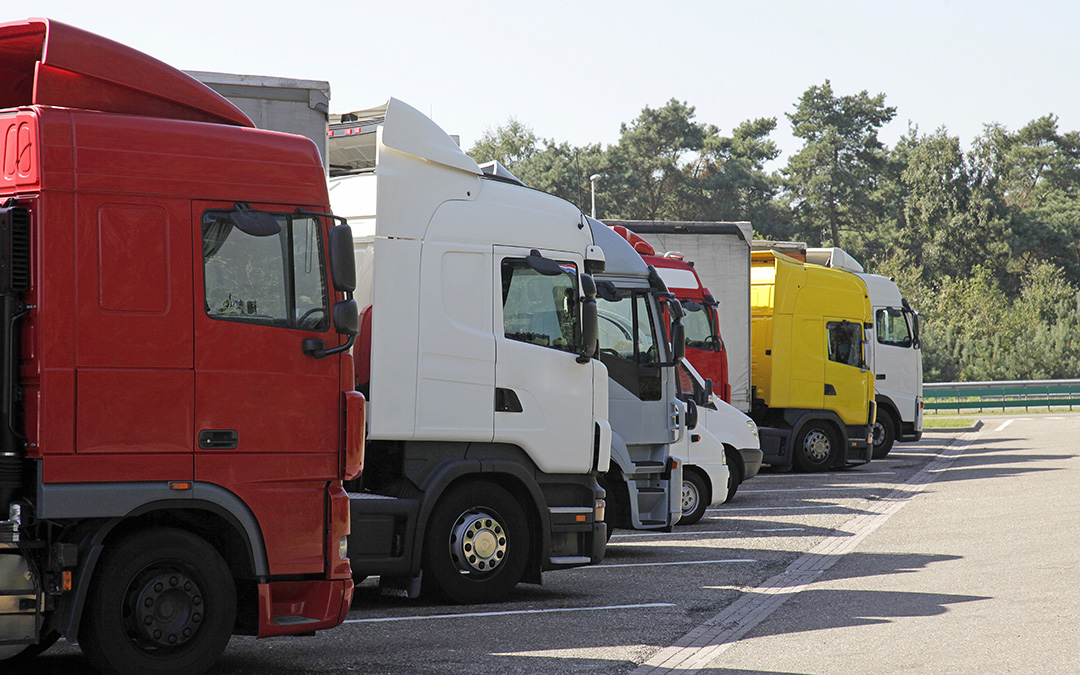In Europe, road freight transport plays a central role in the economy. Trucks transport goods across all countries on the continent every day. But there is always one major problem: the lack of safe parking spaces and the associated challenges in complying with statutory rest periods.
Regulations on rest periods in Europe
When it comes to rest periods, truck drivers in the EU are subject to strict regulations. These are laid down in EU Regulation No. 561/2006, which specifies the maximum driving time and breaks. Here are the most important key points:
- Daily driving time: maximum 9 hours (in exceptional cases 10 hours twice a week).
- Weekly driving time: maximum 56 hours.
- Bi-weekly driving time: maximum 90 hours.
- Daily rest period: at least 11 hours, in exceptional cases 9 hours.
- Weekly rest period: 45 hours (can be reduced to 24 hours if compensated in the following week).
These specified rest periods not only serve to protect drivers. They are also absolutely essential in terms of general road safety. Drivers must therefore document their rest periods – and violations are severely punished.
 Daily rest period: at least 11 hours. Photo: Freepik
Daily rest period: at least 11 hours. Photo: Freepik
How to check
In most European countries, compliance with driving times and rest periods is checked using digital tachographs, which are mandatory in trucks. The police and road control authorities are regularly deployed on freeways and rest areas for this purpose.
Sanctions for violations
Violations of rest periods can result in severe penalties, which vary from country to country. In Germany, for example, drivers have to expect fines of 30 euros per hour for minor infringements, while hauliers sometimes have to pay three times that amount. More serious violations, such as repeated disregard of rest periods, can result in significantly higher penalties and even driving bans.
Particularly affected: heavily frequented routes
Despite these clear regulations, Europe’s truck drivers are faced with the problem that there are simply not enough parking spaces. Industry associations estimate that there is a shortage of 40,000 parking spaces in Germany alone. According to the EU Commission, there is a shortage of around 400,000 secure parking spaces in Europe.
Countries with busy transit routes such as Germany, France and the Netherlands are particularly badly affected. Along the main traffic routes, such as the German A3, the Dutch A2 and the French A1, there is often far too little space for the many trucks whose drivers have to observe their rest periods here.
Gaps in the supply of parking spaces can also be found in southern and eastern European countries such as Spain, Greece and Romania. However, traffic density tends to be lower here, so the situation is somewhat more relaxed.
 Full car park. No room for rest periods. Photo: Continental
Full car park. No room for rest periods. Photo: Continental
What can be done?
Despite the unsatisfactory situation, there are ways to help truck drivers comply with their rest periods. Here are some ideas:
- Use digital tools: Numerous apps and online platforms such as Truck Parking Europe, Park4Night and Sygic Truck support long-distance drivers in their search for available parking spaces. These are displayed in real time. Many of these apps also allow you to reserve parking spaces in advance.
- Plan early: If you plan your route and the necessary rest periods well in advance, you have a better chance of finding a suitable parking space. If at all possible, it is advisable to drive to parking spaces in the morning, as capacities are often exhausted later in the day.
- Look for alternative parking spaces: Some drivers park in industrial areas, on less frequented country roads or near ports. However, these places are not always safe and it is not permitted to park there in all countries. Attention: Fines may also be imposed here.
- Pay for secure parking spaces: In many countries, guarded parking spaces are offered, which are chargeable but secure and convenient. These parking lots usually offer additional services such as showers, restaurants and workshops.
- Consider alternatives such as a trailer or driver change: Some trucking companies rely on the use of driver swap stations, where drivers unhitch their trailer or a new driver takes over while the original one takes his rest period.
And yourself? How do you support your drivers so that they can comply with their prescribed rest periods on the road?


0 Comments